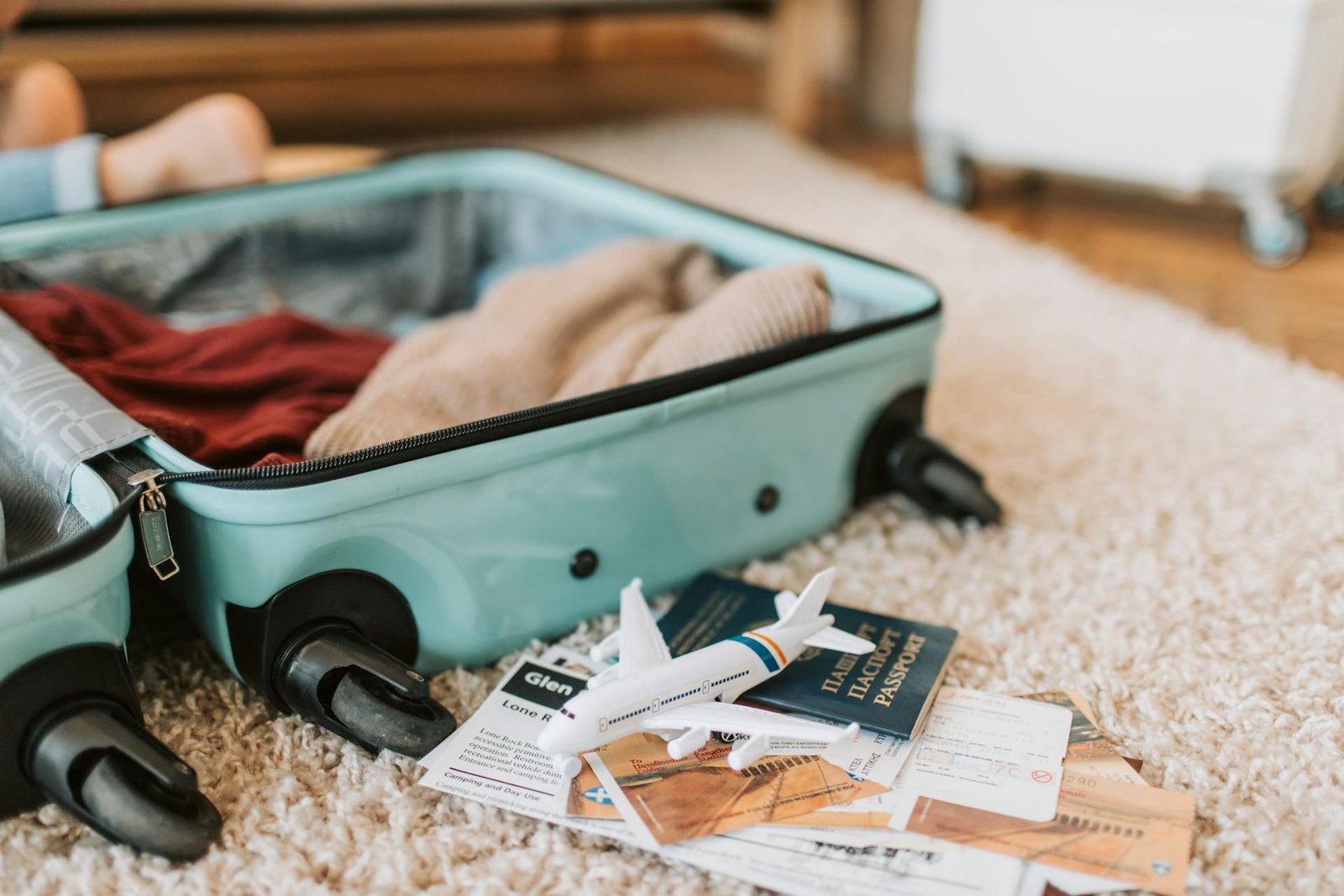Trying to fit everything you need into one bag often feels impossible. Overpacking makes your bag heavy and harder to carry, while underpacking may leave you without essential items. The key is to pack smart. Using the right techniques and organizing your items can save space and make your bag lighter. This guide shares practical packing ideas that actually save space in your bag and make travel easier.
Start with a Packing List
Before you even open your suitcase, make a list of the items you need. Include clothing, toiletries, electronics, and travel documents. A list prevents you from packing unnecessary items and helps you focus on essentials.
Divide your list into categories, such as clothes for each day, shoes, and accessories. This makes it easier to see what is really needed and reduces the chance of overpacking. Check the weather at your destination so you only pack appropriate clothing.
Choose the Right Bag
The type of bag you bring affects how much you can fit inside. Backpacks, duffel bags, and suitcases all have advantages depending on your trip.
A soft-sided suitcase can expand and fit more items, while a backpack is easy to carry and more flexible in tight spaces. Consider a bag with multiple compartments to organize your items efficiently. Lightweight bags allow you to pack more without exceeding airline weight limits.
Roll Your Clothes
Rolling clothes instead of folding them saves a surprising amount of space. Rolled items are also easier to see and access without disturbing other items in your bag.
Start with softer fabrics like t-shirts, pajamas, or casual dresses. Roll each item tightly and stack them neatly in your bag. For thicker fabrics, like sweaters, consider folding but compressing them as much as possible. Rolling reduces wrinkles and maximizes space.
Use Packing Cubes
Packing cubes are small bags that fit inside your larger suitcase. They allow you to group similar items together, like shirts, pants, or underwear.
Packing cubes keep your bag organized and help you find items quickly without unpacking everything. They also compress clothing slightly, giving you extra space. Some travelers use one cube for each type of clothing, while others use cubes to separate clean and dirty clothes.
Layer Your Items Strategically
How you place items in your bag matters. Start with heavier items at the bottom, such as shoes or books, and place lighter items on top.
Fill gaps with smaller items like socks, belts, or chargers. This ensures that every inch of your bag is used efficiently. Placing items strategically also prevents your bag from shifting too much while traveling, which keeps it balanced and easier to carry.
Use Vacuum or Compression Bags
Vacuum or compression bags reduce the size of bulky items, like jackets or sweaters. These bags remove air and compress clothing into a smaller volume.
They are especially useful for winter trips or long vacations where you need heavier items. Compression bags can add a few extra inches of space, allowing you to pack more without making your bag heavier. Just be careful not to overstuff your bag, as this can make it hard to close.
Pack Multi Purpose Items
Choosing items that serve more than one purpose saves space and weight. For example, a towel can double as a picnic mat, or a jacket can work for both casual and formal occasions.
Multi purpose items reduce the number of single-use items you need to pack. Shoes that are comfortable for walking but also suitable for evenings are a good example. This approach minimizes bulk and gives you flexibility while traveling.
Limit Shoes and Accessories
Shoes take up a lot of space. Plan to pack two or three pairs that cover different needs, such as walking, casual, and formal occasions.
Accessories like hats, belts, or jewelry should be limited to essential items that match multiple outfits. Fill shoes with socks or small items to save space. Reducing unnecessary accessories keeps your bag lighter and easier to carry.
Use Travel Sized Toiletries
Full-sized bottles of shampoo, conditioner, and lotion take up space and weight. Switch to travel sized containers or reusable bottles.
Toiletries can also be stored in clear, zippered bags to prevent spills. Keep liquids and gels in a separate compartment for easy access during security checks. Using small amounts of only what you need saves space and ensures compliance with airline regulations.
Wear the Bulkiest Items
If possible, wear your heaviest or bulkiest items on travel days. A jacket, boots, or heavy sweater can be worn instead of packed, leaving more space in your bag for other items.
Layering clothing allows you to stay warm without packing multiple heavy items. This technique is especially useful for winter trips or destinations with varying climates.
Fold Clothes Inside Shoes
Small items like socks, underwear, or belts can be folded and placed inside shoes. This uses space that would otherwise be empty and helps keep your shoes in shape.
Packing inside shoes also keeps small items together and prevents them from getting lost in your bag. Combine this with rolling clothes for maximum space efficiency.
Use Every Inch of Space
Think creatively about filling gaps. Jackets can be folded around the sides of the bag, belts can be coiled inside small corners, and chargers or cables can be tucked into empty spaces.
Using every inch of space helps you avoid overpacking and allows for last minute additions. Being strategic with placement keeps your bag organized and easy to carry.
Pack Clothes That Can Be Mixed and Matched
Choose clothing that can be worn in multiple combinations. Neutral colors or simple patterns make it easy to create new outfits without packing extra items.
For example, three shirts and two pants can create six different outfit combinations. This approach reduces the total number of clothing items and saves a significant amount of space.
Keep Essentials Accessible
Pack items you will need during travel, such as passports, tickets, snacks, or chargers, in an easy to reach pocket or compartment.
This saves time at security checks and during transit. It also prevents you from unpacking your entire bag just to find small but important items. Keeping essentials accessible makes travel smoother and less stressful.
Pack Light Electronics
Choose compact and lightweight versions of electronics whenever possible. A small tablet can replace a laptop for entertainment and browsing. Use chargers that work for multiple devices to reduce clutter.
Electronics can take up space and add weight, so bringing only what you need saves room for clothing and other essentials. Consider items that serve multiple functions to maximize efficiency.
Consider Laundry Options
If your trip is long, plan to do laundry instead of packing excessive clothing. Hotels, hostels, or laundromats often provide washing services.
Packing fewer clothes and washing them midway through your trip reduces the space needed in your bag. This approach also keeps your bag lighter and makes carrying it easier, especially for extended travel.
Final Packing Check
Before closing your bag, review each item. Remove anything that is not essential. Make sure items are organized and placed efficiently.
A final check ensures that you have only what you need, maximizing space and making your bag lighter. Double check travel documents, chargers, and toiletries to avoid forgetting important items.
Conclusion
Packing smart is a key part of stress-free travel. Using a packing list, rolling clothes, using packing cubes, and filling every inch of your bag can save space. Choosing multi purpose items, limiting shoes and accessories, using travel sized toiletries, and wearing bulky items on travel days helps keep your bag light.
Being organized and strategic with space allows you to carry everything you need without overpacking. Following these packing ideas ensures that your travel experience is smoother, more efficient, and more enjoyable. Smart packing makes traveling easier and more comfortable, giving you more freedom to enjoy your destination.




